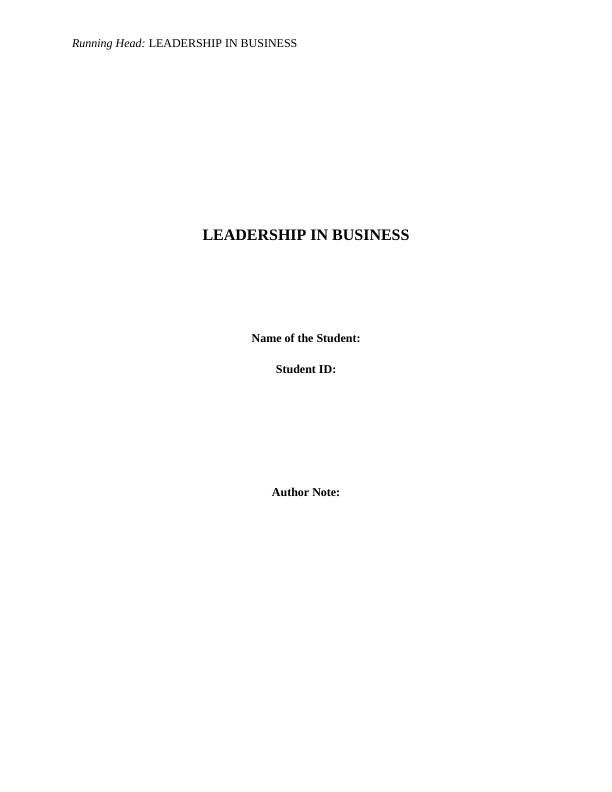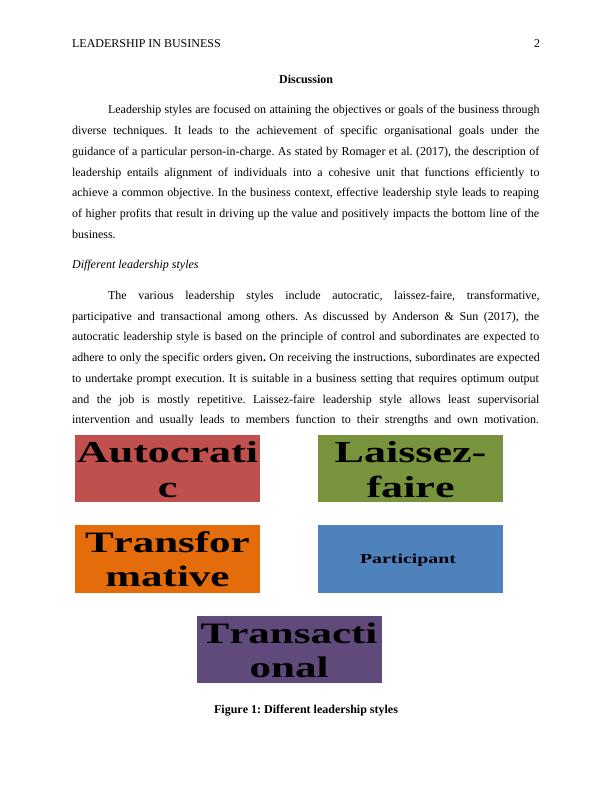Leadership in Business
7 Pages1348 Words446 Views
Added on 2023-04-20
About This Document
Leadership styles, more often than not, align with the personality type of individual leaders. The essay discusses various leadership styles and comparisons along with critical analysis of the same.
Leadership in Business
Added on 2023-04-20
ShareRelated Documents
End of preview
Want to access all the pages? Upload your documents or become a member.
Leadership Styles in Healthcare Sector
|11
|3183
|323
Leadership in Business Ethics and Styles in Management
|16
|2697
|484
Leadership Style: Mark Zuckerberg
|17
|838
|26
Evaluation of Different Leadership Styles for Effective Management at Syngenta
|10
|639
|441
Leadership: Self Reflection
|8
|2590
|279
Impact of Leadership Styles on Strategic Management: A Case Study of Photoshop Worldwide
|12
|4094
|421



